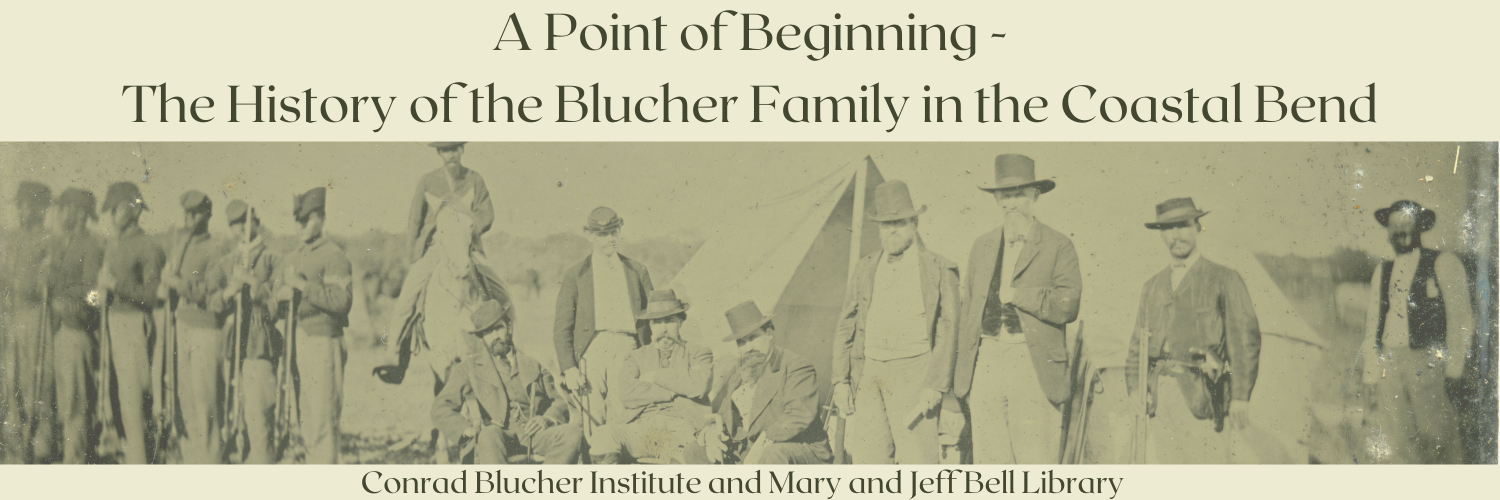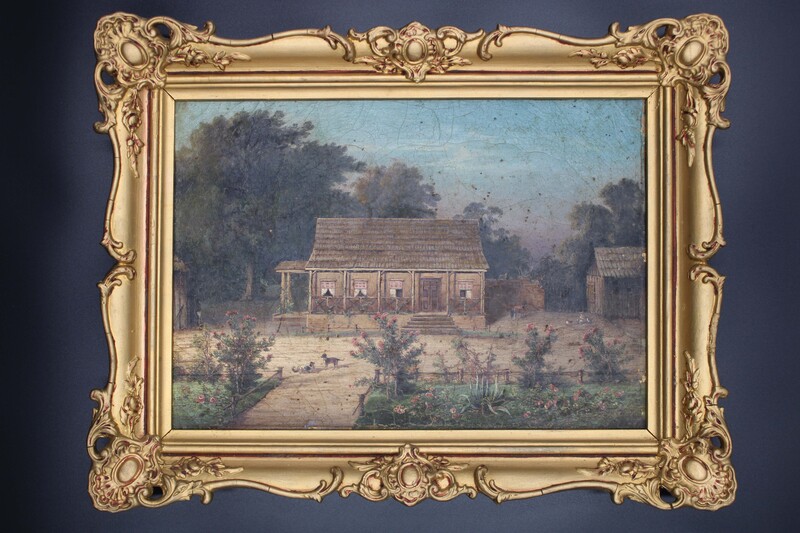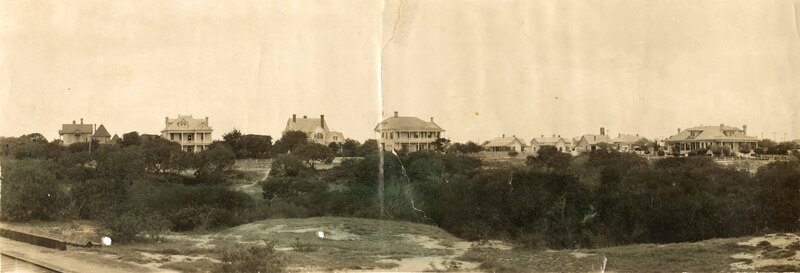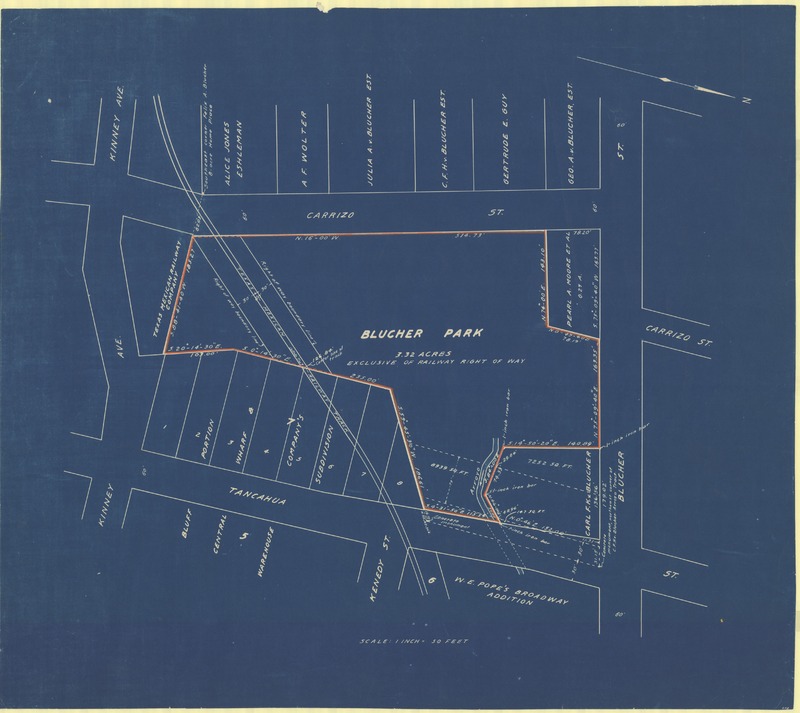Blucherville
Please click below for exhibit audio orated by Dr. Thomas H. Kreneck, Archivist and former Director of Special Collections and Archives at Texas A&M-Corpus Christi
Upon arriving in Corpus Christi with Maria, Felix quickly purchased an eight-acre tract from H. L. Kinney on the high bluff that stood above Corpus Christi Bay. This property became the Blucher homestead, what came to be known later as “Blucherville.”
According to their son Charles, a small two-room house built by a previous owner already stood there and into it the Blucher couple moved and made do. In 1852, the settlement incorporated as a town, with the Bluchers ranking among its most remarkable citizens for their energy and Old-World refinement, even despite the hardships they faced.
The original eight-acre homestead that by the early twentieth century that had come to be known as “Blucherville” ultimately included five major residences for Felix and Maria’s children.
Most prominent of these edifices and the ones that remain until this writing are the homes of Charles, Richard, and George. All facing Carrizo Street near the corner with Blucher Street, these three houses retain their impressive elegance.
Begun in 1880 as a modest structure, the Charles F. H. von Blucher home was added onto and remodeled so that by 1909 it ranked among the most magnificent examples of Victorian-type architecture in the city. Richard and George constructed their homes in 1901 and 1904, respectively.
In 1942 the Blucher descendants donated to the city all the land of the original homestead across Carrizo Street toward the bay (approximately 3.65 acres) to create Blucher Park.
They gave the property in memory of Charles and intended it as a sanctuary for native plants and flowers existing nowhere else in Corpus Christi. The newspaper reported that: “The donors want Blucher Park to stay a place of quiet and meditation, a bird sanctuary and a spot where residents may go for a quiet tour ...” It was to be a natural setting in perpetuity, very much in keeping with progressive public discourse on urban living.
Blucher Park was also reminiscent of Maria von Blucher’s earliest observations of the natural beauty of the region’s flora and fauna. The park emerged among the well-known destinations visited by bird watchers on what is called “The Great Texas Coastal Birding Trail along the Central Flyway.”



